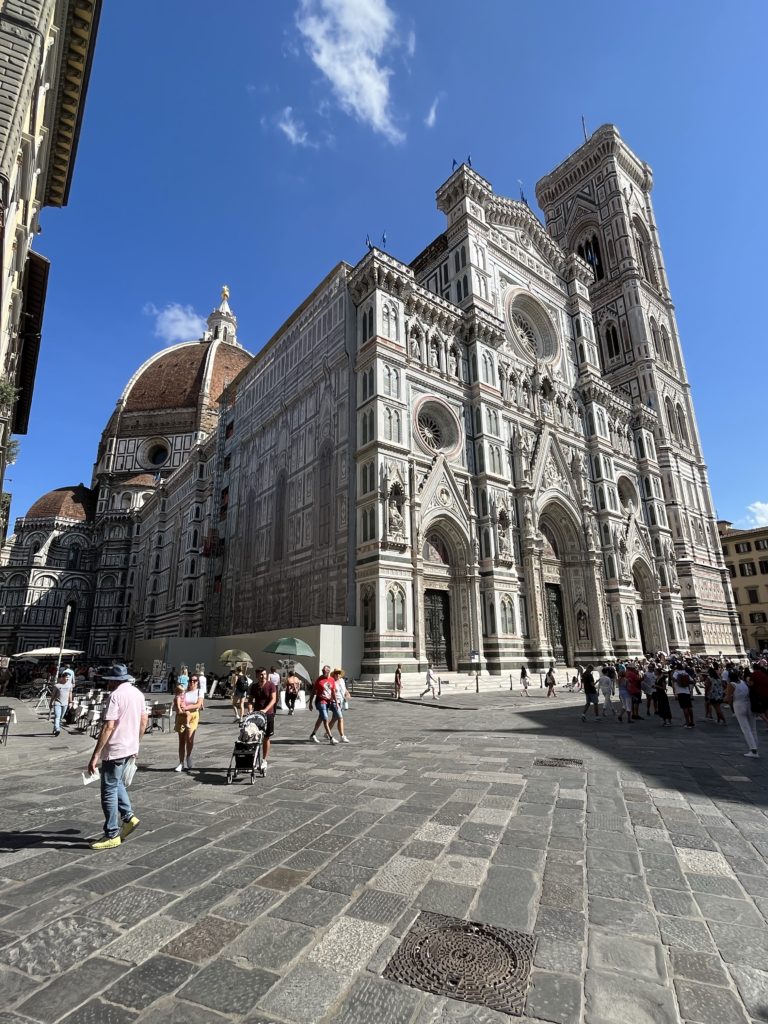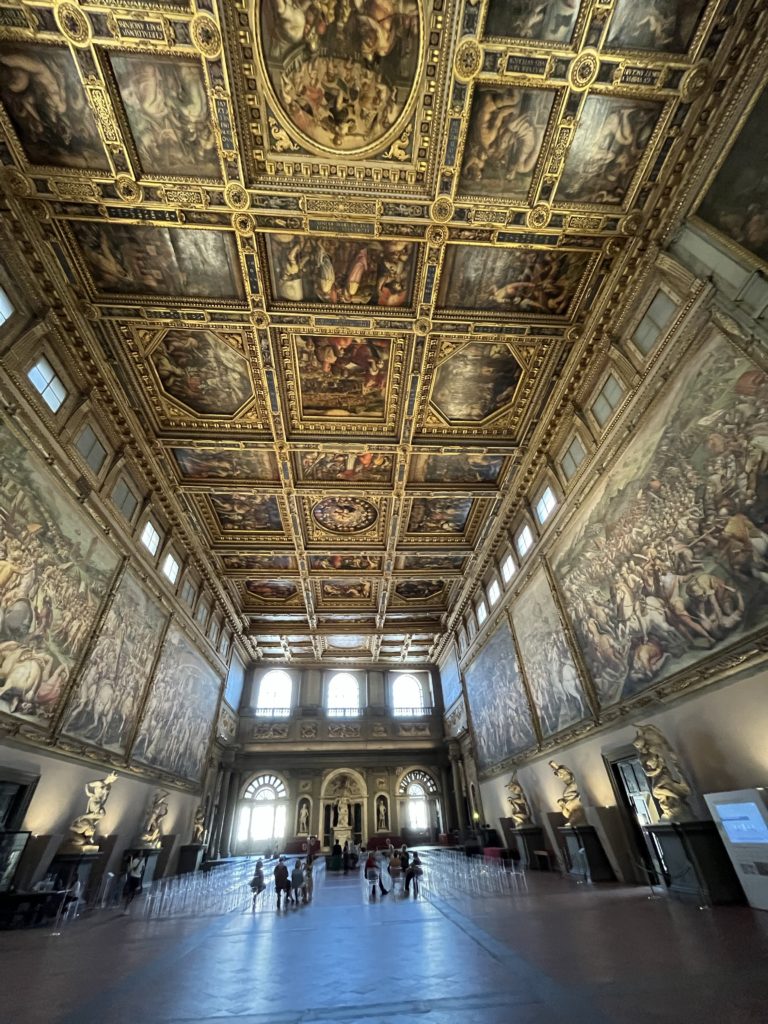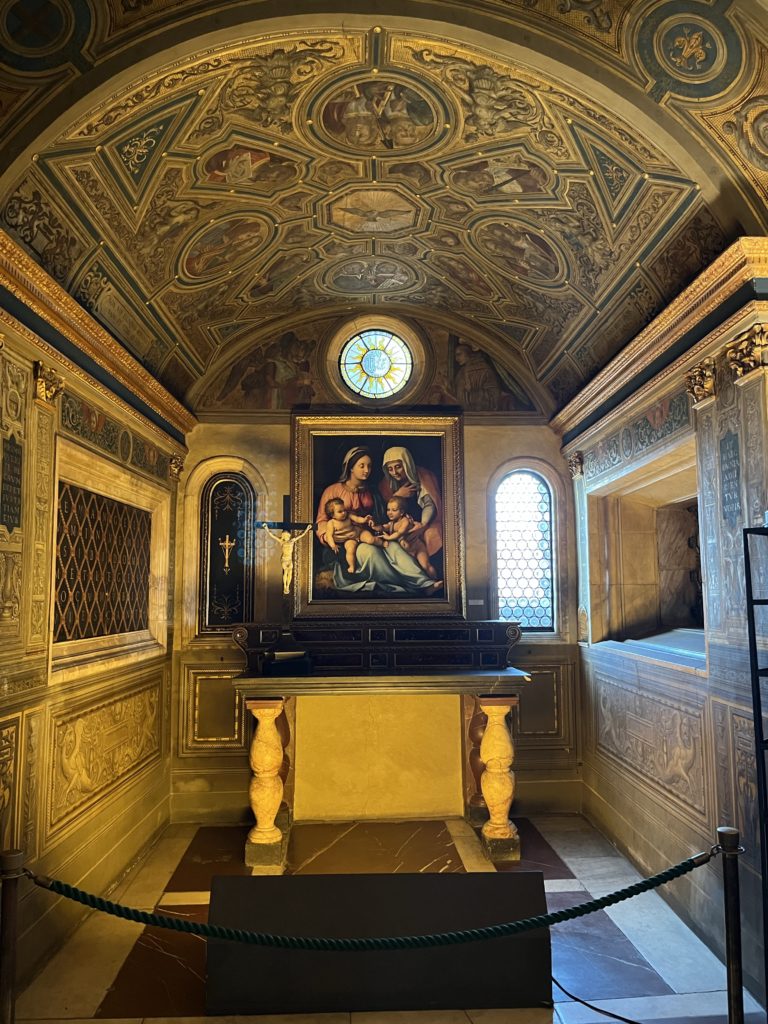
So, I had a very funny blog post about ready to go, but the GSB editorial division reviewed it and would not let me post it. I don’t remember the specifics of their objections, but words like “insulting,” and “stereotyping” were used; I called it painting with a broad brush and insisted any kind of painting in Florence was encouraged, even the stereotyping kind. The editors were not convinced. So, I went back to the drawing board.
Because this is, after all, a travel blog, I think it appropriate from time-to-time, to offer advice to first-time travelers, such as this gem: If you don’t speak Italian, speaking English with an Italian accent will not help the locals unversed in the Queen’s English understand you. I mention this because I noticed a member of the GSB team trying this this morning. I thought if an experienced GSB traveler made this mistake, you might be tempted to the same error.
Today, the rest of the GSB team went on a wine tasting tour in the Tuscan countryside. Whatever. All I can tell you is they left, and they came back and said they had a good time. I, on the other hand, mined this town’s history for any nuggets of Kingdom history it would yield, and I did find some treasure.
First, I visited the Baptistry of St. John, an iconic landmark just a five minute walk from our hotel. Dante was baptized here, as were members of the Medici family. After that, I got in line to enter the Duomo a/k/a Florence Cathedral, the Cattedrale di Santa Maria del Fiore (in English, “Cathedral of Saint Mary of the Flower”).
Forty-five minutes ahead of opening, the line was already 100 yards long and wrapped around the side of the church. An hour later, as I was finally nearing the entry, a tour guide directly behind me began singing Ave Maria. I think 100 Bottles of Beer on the Wall would have gone over better with her group.
The Duomo is unique and beautiful externally, but disappointing internally. If the Duomo was a woman, we would say she was attractive but shallow. Having seen some of the most beautiful churches in the world–which, by the way, charged nothing for entry–I would rate the Duomo low on the list and not worth the ten Euros demanded for entry. Unless you plan on seeing the ruins of the original cathedral under the Duomo or the relics of St. Zenobius (apparently behind the apse in the Duomo but which I regrettably missed), spend your ten Euros on a gelato and cappuccino.
Once you enter the Duomo, walk to the front, look up, take a pic of the inside of the dome, and find your way to the Zenobius shrine. Now you are finished, and you can proceed down the stairs near the entry of the church to the ruins of the Cathedral of St. Reparata and her bones, allegedly. Reparata, was a Christian who lived in Caesarea in the 3rd Century A.D. under the reign of Roman Emperor Decius. While a teenager, she was tortured or her faith in Jesus, and when she refused to deny Jesus, she was beheaded. The presentation of the excavations of the Cathedral of St. Reparata give one a surprisingly realistic experience of what it would have been like to be inside this church in the 5th century.

In the afternoon, I toured the Palazzo Vecchio, which is located on the plaza (Piazza della Signoria) where Savonarola was martyred. In the Palazzo Vecchio you will see the Hall of the Five Hundred, commissioned by Savonarola after he had helped oust the Medici from power and establish the Council of Five Hundred, so the people could rule Florence. The Hall of Five Hundred was where the five hundred citizens met and conducted the business of governing Florence.

Ironically, Savonarola was kept in a cell in the tower of the Palazzo Vecchio before being martyred, and he spent his last moments alone in prayer in the Chapel of the Signoria in the palace. I stood in the chapel today wondering what Savonarola was thinking at that time. He had been tortured for more than a month by the Florentines trying to get him to admit heresy, and he had rightly refused. Now he was going to be hung and burned before the same people he had led to repentance, saved from the tyranny of the Medici, and provided freedom and self-rule. Such is the price of fame in the Kingdom.
The rest of the palace was a vain monument to the Medici. It was interesting; the art was wonderful, but the golden nugget was the chapel and the connection to Savonarola.
Until tomorrow. GS

